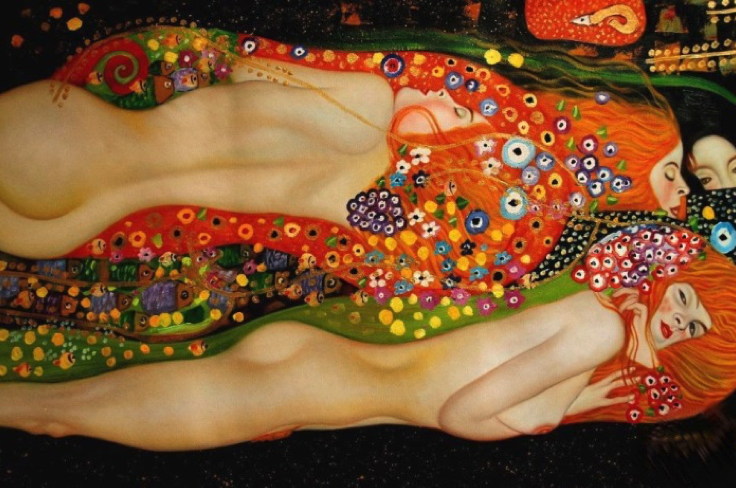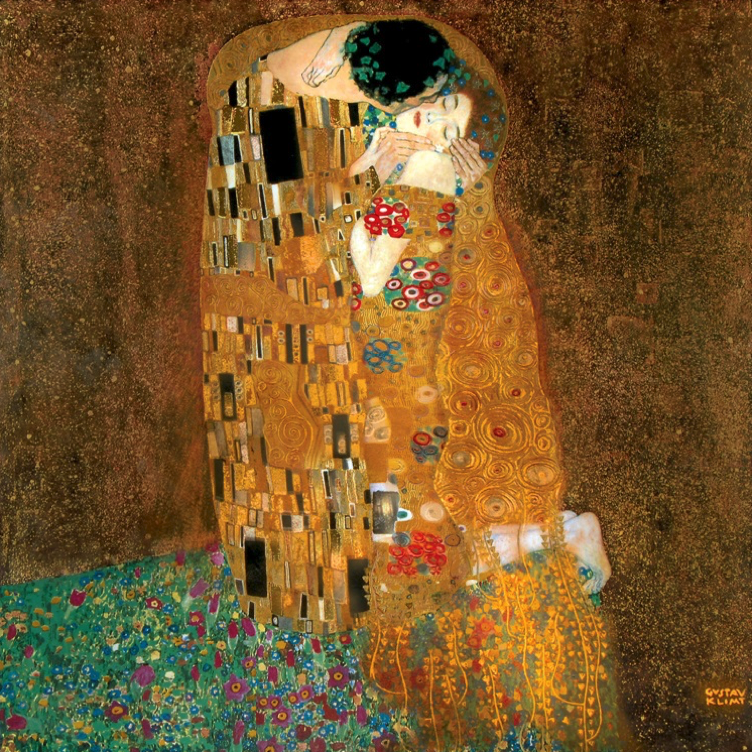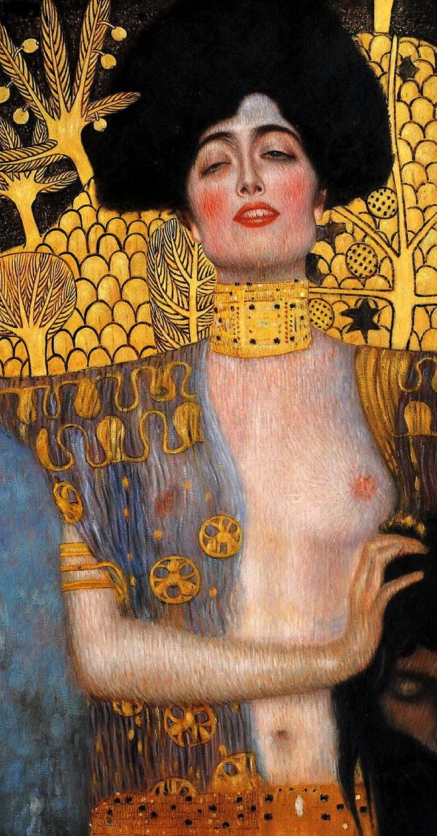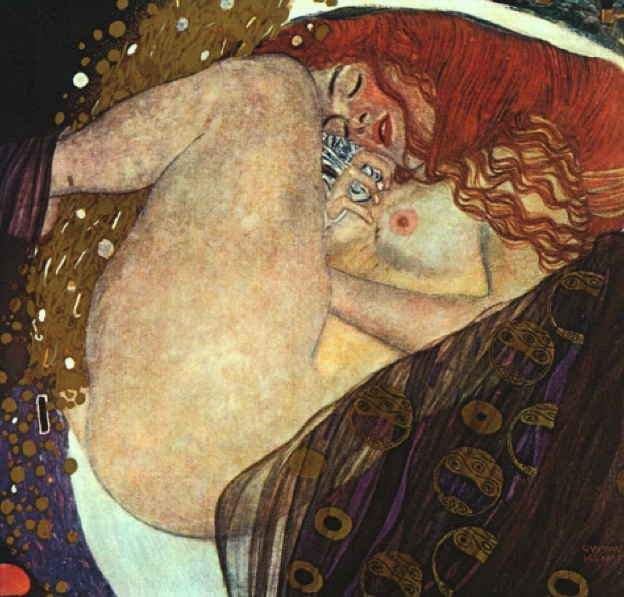Above All, Women: Four Images of Gustav Klimt
for string quartet (2016)
Duration: 20 minutes
Commissioned by the University of Texas at Dallas
Premiere Performance: February 11, 2017; Amernet Quartet at UT Dallas
Reviews:
At long last -- Maestro Rodriguez.
[Above All, Women: Four Images of Gustav Klimt for String Quartet] is a most satisfying confluence of visual and musical art… Rodriguez has composed well over 100 works in every genre and has deservedly achieved critical acclaim… Rodriguez’s musical pedigree is unassailable. He has studied with Nadia Boulanger, Jacob Druckman, Bruno Maderna and Elliott Carter -- composers representing a formidable array of styles. Of Rodriguez’s own resultant music, my Fanfare colleague Robert Carl, himself a composer of an admirably eclectic persuasion, has stated: “…its melodic material is florid, ornamented, and always singing…great structural drama… There is a fluid blend of post-minimalist with new neo-Romantic technique.”
The string quartet, Above all, Women, was composed in 2016… Its first section, “Sea Nymphs” is based on Klimt’s painting “Sea Serpents II.” The second, “The Kiss,” shares its title with that of Klimt’s painting. This is followed by the Biblically inspired “Judith,” and finally by “Danae,” based on a story from Greek mythology… Transcendental music… Ignore it at your own peril.
William Zagorski, Fanfare Magazine
Not to be Missed.
Robert Xavier Rodríguez writes expressively and approachably. His music is satisfyingly complex, both texturally and emotionally… Above, All, Women is subtitled “Four Images of Gustav Klimt.”… The title comes from a Klimt postcard to his lover about his choice of subjects. The first movement takes the painting Sea Serpents II as its inspiration, although the movement itself is entitled “Sea Nymphs.” The painting shows four women caressing each other under water. The lines of the painting are fluid, as are those of the music, where tenderness meets sensuality and ecstasy… No collection of Klimt would be complete without The Kiss, and, indeed, this forms the inspiration for the lyrical, perhaps Bergian, second movement, a movement of increasing passion…
“Judith” takes a Klimt painting based on the Apocryphal Judith (the Israelite woman who seduces Holofernes, a Philistine general, and cuts off his head). The music paints the story of the seduction, the sexual encounter and, finally, her escape. Again, there is a sense of Expressionist yearning in the upwardly-reaching lines. “Danae” is the mother of Perseus (fathered by the ever-incorrigible Zeus). Zeus appears as a shower of golden rain, depicted by Rodríguez via overtone glissandi. Another musical depiction of passion leads to a coda bathed in light… Rodríguez is clearly a major voice; his music demands exploration.
Colin Clarke, Fanfare Magazine
…Rodríguez’s music doesn’t really sound like that of any other composer I can think of. For instance, the passion subsides in the opening movement around the two-minute mark to create a brief section of stasis and quiet beauty. On the other hand, gestures suggesting 19th-century Romanticism do abound, and the movement is spun out from an upwardly spiraling figure from that era. The second movement is based on Klimt’s best-known painting, “The Kiss.” Beginning with a gentle dialogue between the violins, the intensity and tempo increase to indicate the increasing passion of the man and woman depicted in the painting. The ecstatic rapture of the couple is brilliantly depicted in the music with its soaring melodies and upward-swooping glissandos. The third movement opens with an agitated section engaging all four instruments, who utilize both normal and Bartók pizzicato. This movement portrays the Klimt painting “Judith,” itself based on the apocryphal story of the ancient Israelite woman who seduces a Philistine general in order to decapitate him when he falls asleep after their sexual encounter. The music, including a brief but virtuosic cadenza on the cello, vividly portrays the drama of the story. The final movement is based on “Danae,” a story drawn from Greek mythology… The golden rain that represents Zeus as he impregnates Danae is musically symbolized by glissandos over harmonics in the quartet, and this movement is quite as impassioned as any other in this passionate work.
David DeBoor Canfield, Fanfare Magazine
Composer's Note:
Above All, Women: Four Images of Gustav Klimt for String Quartet (2016) is the result of a commission from the University of Texas at Dallas School of Arts & Humanities, Dr. Dennis Kratz, dean. The Amernet Quartet gave the premiere performance at UT Dallas on February 11, 2017.
The four movements of the 20-minute quartet are based on four paintings of women by the Austrian painter Gustav Klimt (1862-1918). The title, Above All, Women, comes from a postcard from Klimt to his long-time lover and model, Emily Flöge. Flöge had asked him whether he liked to use his own likeness as subject matter for his paintings. Klimt replied, “I am only interested in painting other people -- above all, women.”
My first string quartet, Meta 4 (1994) was premiered as music for a ballet, and it is my hope that this new Klimt quartet will be danced, as well. I drew inspiration from the opulent atmosphere of works by two of Klimt’s contemporaries: the String Quartet Op. 10 of Claude Debussy (1862-1918) and Verklärte Nacht, Op. 4 by Arnold Schönberg (1874-1951). Elements of these two contrasting styles are brought forward to the 21st century, as tonal melodies and harmonies plus Lydian and octatonic scales in regular meters are interwoven with freely atonal and rhythmically disjunct passages. The elaborate detail of Klimt’s backgrounds, often in shimmering gold, is reflected in the music by rich, contrapuntal accompaniment patterns and intricate passage work.

“Sea Nymphs” is based on a painting (“Sea Serpents II”) of four nude women with long hair caressing each other underwater. They are wrapped in red seaweed that glows like stars around them. In the music, pairs of instruments intertwine over a rippling accompaniment that suggests the women’s flowing movements. The two pairs often merge as the four instruments cling together at climactic points, then individual lines playfully dart away to form other combinations.

“The Kiss” is one of Klimt’s best-known paintings. It depicts a man and a woman in a passionate embrace. The model for the woman was Emily Flöge. The man wears a flamboyant golden robe, and he wraps it around the woman, who is kneeling before him. The music begins with gentle nuzzling between the two violins. There is a steady increase in tempo as the motion doubles, then doubles again to show the growing intensity of the kiss. The music rises and falls, then builds to a passionate climax. The activity gradually subsides, and there is a quiet reprise of the tender opening.

For “Judith,” the model was Adele Bloch-Bauer. Klimt’s title refers to the Apocryphal story of Judith, a beautiful Israelite widow who defends her country by seducing Holofernes, an Assyrian general, and cutting off his head. The painting shows a richly-dressed woman with her breasts revealed against an ornate gold background. She wears a hairstyle of Klimt’s time, and she strokes a man’s severed head which is barely visible at the side of the painting. Her face is flushed, and she has an expression of lascivious satisfaction.
The music begins with an agitated pizzicato passage that depicts Judith furtively making her way into Holofernes’ camp. When she enters Holofernes’ tent, a cello outburst expresses the general’s outrage, which turns to delight as he is taken with Judith’s beauty. She dances for him and gets him drunk. They have an intense sexual encounter, followed by a period of contented relaxation. Judith waits until Holofernes falls asleep; then she cuts off his head and, carrying the head, makes her escape.

The final painting, “Danae,” is based on a story from Greek mythology. The Oracle of Delphi tells King Acrisius that the son of his daughter, Danae, will one day kill him. Since Danae is childless, Acrisius locks her in a brass tower to protect her from suitors. Zeus, however, desires her and streams into her chamber in the form of a sheet of golden rain. Later a son, Perseus, is born, and Perseus fulfills the prophecy by killing Acrisius. Klimt’s painting depicts a voluptuous and contented Danae lying naked in her bed, enveloped by a richly-detailed gold curtain. A dark rectangle represents Zeus himself at a strategic point in the curtain.
In the quartet, the glitter of the golden rain is represented by frequent glissandi on the overtone series of all five pitches of the open strings of the instruments: E, G, A, C and saving D (for Danae) for the end. The movement opens with a shimmering aura in the upper strings, with the cello representing Zeus caressing the sleeping princess as the music builds to a climax, pauses for a moment of reflection and then rises again in a radiant coda.